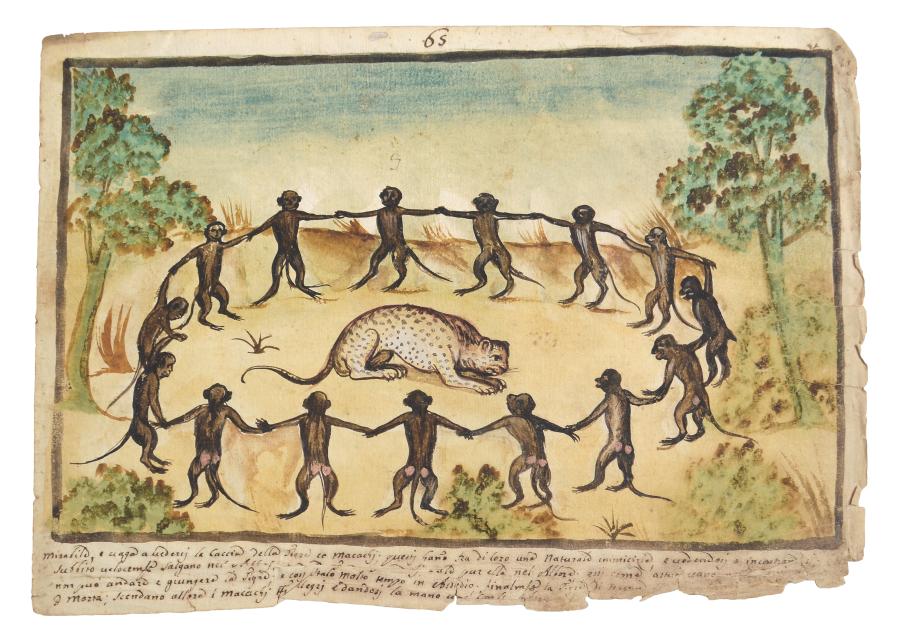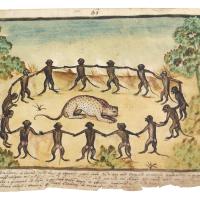PW065: Remarkable . . . hunt of the tiger by macaques
Mirabile, e vaga a vedersi la caccia della Tigre co macachi1; questi han[n]o fra di loro una naturale inimicizia, e vedendosi o incontrandosi [---] subbito velocemte salgano nel Albori; ma la Tigre sequendoli sale pur ella nel Albore; essi come astuti vano [. . .] non può andare e giungere la Tigre; e cosi stalo molto tempo in Assedio; finalmente la Tigre di rep[. . .] [. . .] per morta; scendano allora I macachi t[u]tti allegri e dandosi la mano uno con l’[Altro?] [verso] morta; essa pigliando il tempo, se gli avventa e ne amaze molti e se li mangia
[verso in Portuguese] maqacos com leam
Remarkable, and beautiful to see the hunt of the Tiger by the macaques; these have between them a natural inimity, and seeing or meeting each other [. . .] immediately and rapidly they jump in the tree, but the tiger following them goes up herself in the tree; these because they are astute go [. . .] the tiger cannot go or reach; and thus they remain a long time in Siege; finally the Tiger to [. . .] as dead; the macaque then come down all happy and holding hands the one with the other [. . .] [verso] dead; this one seizing the time, it charges upon them and kill many of them and eat them
[verso in Portuguese] macaques with lion
- 1Perhaps mangabeys, who like other primates are known to harass predators. See Guy Cowlishaw, “Vulnerability to Predation in Baboon Populations,” Behaviour 131, no. 3/4 (1994): 293-304; Margaret C. Crofoot, “Why mob? Reassessing the costs and benefits of primate predator harassment,” Folia Primatologica 83, no. 3-6 (2012). My thanks to Meg Crofoot for her insights on this vignette.




Add new comment